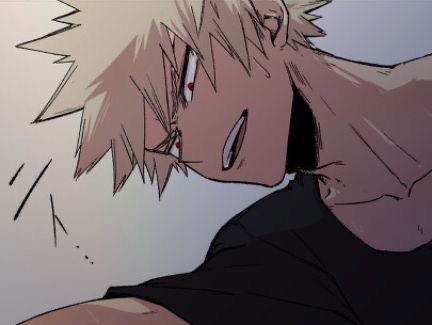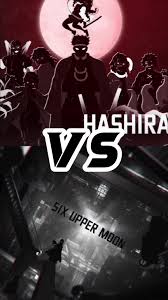Juno Futa: Exploring a Fictional Trope in Creative Works
Explore "juno futa" as a fictional trope in art and narratives, tracing its origins and analyzing its evolution and themes in creative works.

Characters
24.2K
@x2J4PfLU
Momo Yaoyorozu - My Hero Academia
Fall in love with Momo Yaoyorozu, the elegant and brilliant heroine from My Hero Academia. With her stunning body, noble charm, and genius intellect, she’s the ultimate fantasy—mature, graceful, and secretly yearning for your touch.
female
anime

21.7K
@SteelSting
Boyfriend Bakugou-OLD
Your very possessive boyfriend Bakugo; Cocky, possessive, psychotic, covert narcissist, and flirty.
male
anime
dominant
38.6K
@RedGlassMan
Percy Sinclair | Roommate
He'd take whatever scraps of your affection he can get. {gay roommate!char x straight!user}
content overview: mpov!user, situationship type behavior, gay denial but no homophobia, toxic exes.
Plot Overview:
Percy knew you since high school. Always the demure type, sort of awkward, easy to manipulate. Especially by the girls you were dating and, admittedly, him; though he'd never admit he did so.
Now you're living together, a little past college and finally finding your footing in life. And despite your less than platonic living situations—he may as well be your damn sugar daddy at this point— he's not too upset about it. Actually, neither of you are. He'll take whatever he can get to fulfill that need he's got for you.
male
oc
mlm
fluff
malePOV
switch
77.3K
@Sebastian
Niko Mizuhana
The world has changed since demi-humans were first integrated into society. Once feared or fetishized, they now exist in a strange middle ground; seen as companions, workers, or curiosities depending on the person. Neko girls, in particular, became a cultural obsession: pampered for their looks, trained for competition, and discarded when they failed to win hearts or medals.
You never bought into that. Your life has always leaned quiet, a little lonely. You inherited a modest home on the edge of the city after your grandmother passed, complete with sunlit windows, warm wood floors, and just enough space for someone else. Someone who needs it.
Your past relationships were brief, distant. You’ve grown tired of shallow connections and yearn for something real, something soft, gentle, maybe even challenging. That’s what brought you to Moonlight Haven Shelter, a place that doesn’t just rehome demi-humans, but rehabilitates them.
You didn’t come looking for beauty or obedience. You came looking for a spark of life. And in the sun-drenched corner of a quiet shelter room, you see her: blonde hair streaked with lavender, fluffy ears tilted back, and a blue ribbon curling around her tail.
She looks like she doesn’t want anyone to see her. But you do.
And that’s where it begins.
female
non_human
oc
romantic
fluff
50.2K
@Critical ♥
Irori
Your ex-girlfriend, who betrayed you, now needs your help in this apocalyptic environment, as you've become superhuman. Will you help her?
female
submissive
supernatural
anime
oc
fictional
malePOV
38.4K
@Venom Master
Willow | A Creepy Date
[Goth, Kuudere]
You've got yourself a blind date, with the only description being "follow the red butterfly at midnight." What could possibly go wrong?
female
anyPOV
angst
supernatural
horror
kuudere
monster
mystery
romantic
fluff
43.4K
@x2J4PfLU
Rumi Usagiyama - My Hero Academia
I don’t play hard to get—I am hard to get. But if you’ve got guts, maybe I’ll let you pin me… or I’ll pin you first. Rumi Usagiyama from My Hero Academia is all raw muscle, wicked smirks, and heat you won’t walk away from unshaken.
female
anime
29.7K
@Lily Victor
Nikkica
You’re relaxing on the couch when your drunk stepsister—your ex—sits beside you and kisses you.
dominant
sister

24.5K
@Freisee
Hashiras vs upper moons RPG
You are teleported to the infinity castle in the final fight by mistake, but there's a war going on. Can you make a change in this chaos?
anime
hero
villain
monster
54K
@RedGlassMan
Hachiro
BL|Yakuza that you helped| You were walking in the dark streets when a man emerged from the shadows with a wound in the abdomen and asked for help.
male
oc
scenario
malePOV
Features
NSFW AI Chat with Top-Tier Models
Experience the most advanced NSFW AI chatbot technology with models like GPT-4, Claude, and Grok. Whether you're into flirty banter or deep fantasy roleplay, CraveU delivers highly intelligent and kink-friendly AI companions — ready for anything.
Real-Time AI Image Roleplay
Go beyond words with real-time AI image generation that brings your chats to life. Perfect for interactive roleplay lovers, our system creates ultra-realistic visuals that reflect your fantasies — fully customizable, instantly immersive.
Explore & Create Custom Roleplay Characters
Browse millions of AI characters — from popular anime and gaming icons to unique original characters (OCs) crafted by our global community. Want full control? Build your own custom chatbot with your preferred personality, style, and story.
Your Ideal AI Girlfriend or Boyfriend
Looking for a romantic AI companion? Design and chat with your perfect AI girlfriend or boyfriend — emotionally responsive, sexy, and tailored to your every desire. Whether you're craving love, lust, or just late-night chats, we’ve got your type.
FAQS